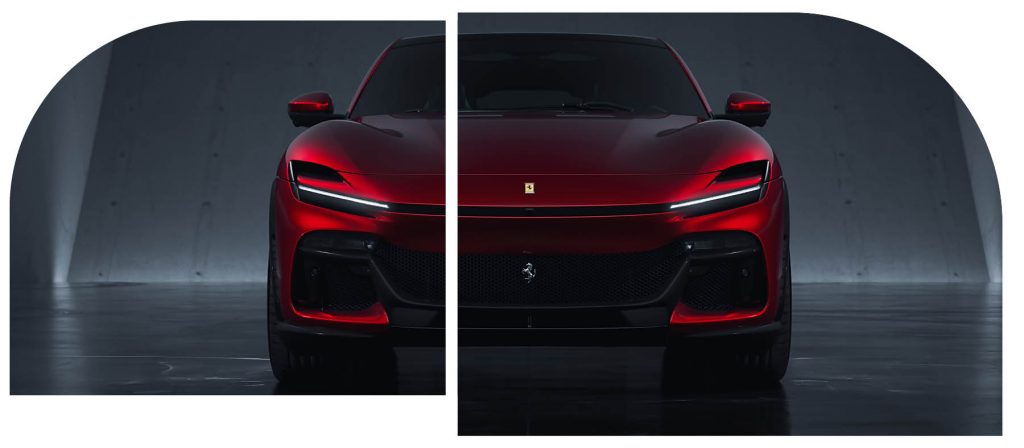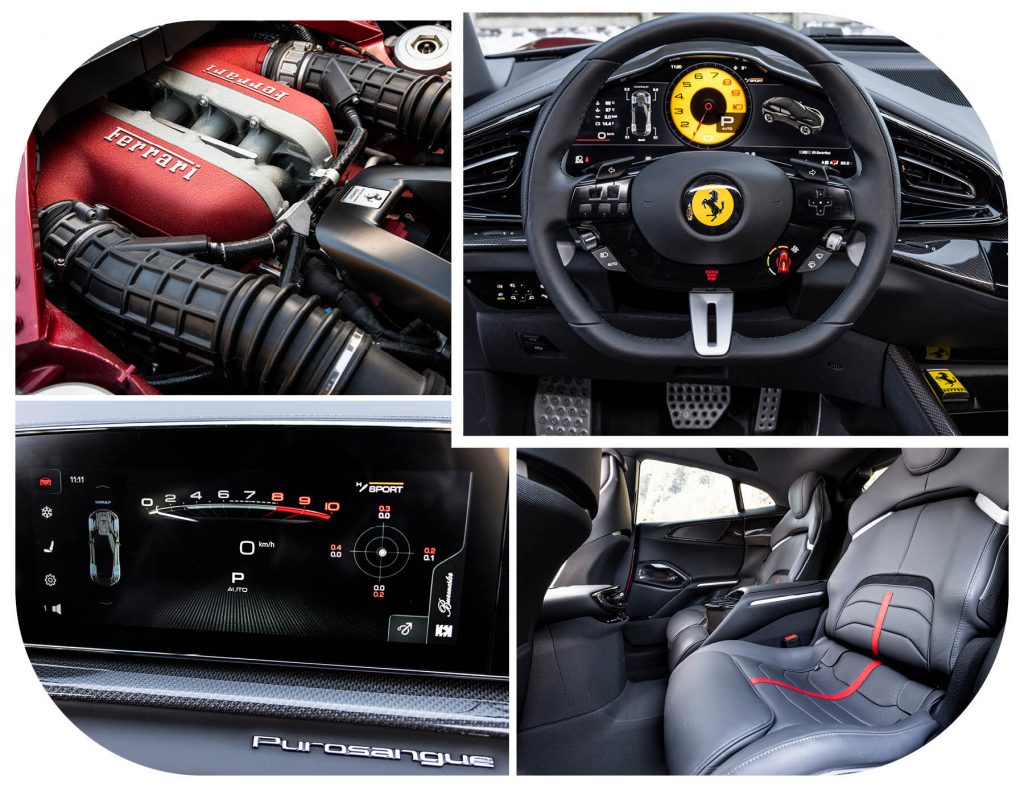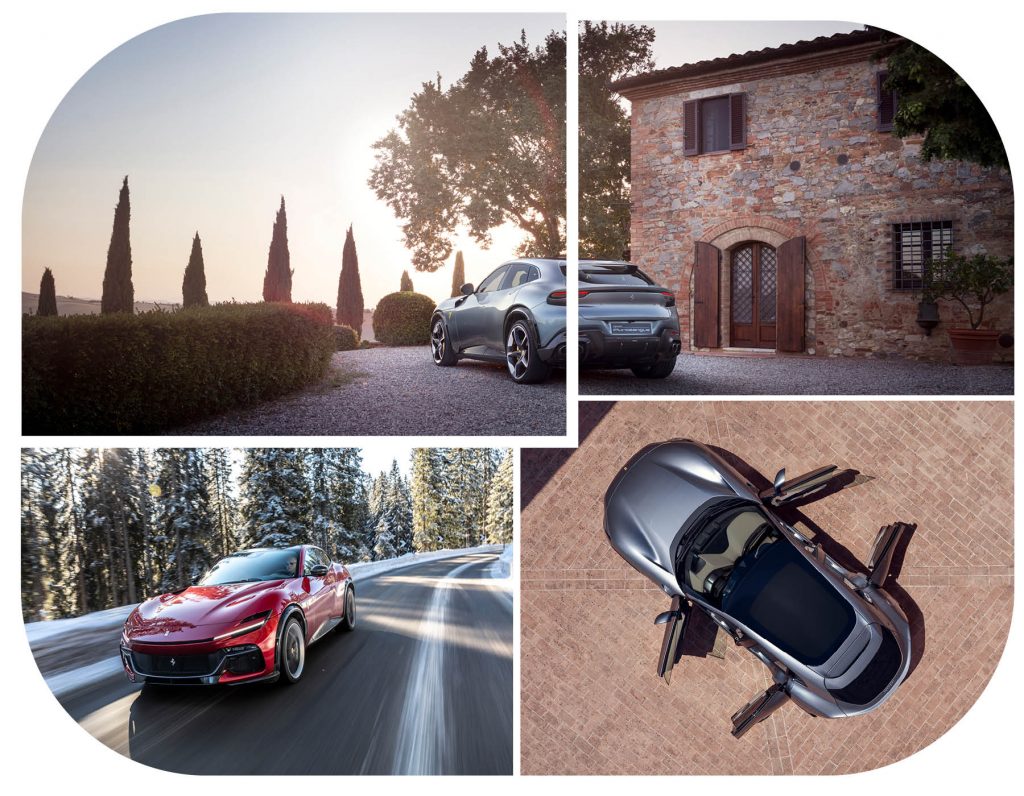Language
You can read the magazine in one of the following languages
For all their pulse-quickening thrills and burbling, barking theatrics, there comes a moment during your time behind the wheel of any supercar where the excitement and discomfort scales begin to tip in entirely the wrong direction.
Nobody really likes to admit it, but it’s true. And it inevitably arrives when you’re clattering along in bumper-to-bumper traffic, wrestling steering that feels heavier than Thor’s hammer, or when you’re being jarred in and out of consciousness by the brain-rattling ride.
You grit your teeth through it, of course, as you bounce and scrape past people looking impossibly comfortable in their affordable hatchbacks, because when you do finally find yourself on a suitably smooth, corner-filled road, those complaints vanish in a great adrenaline-fueled rush.

Which is all a part of what makes this new Ferrari Purosangue (meaning ‘thoroughbred’) so interesting. Because, in its softest driving settings, this approximately US$400,000 super SUV is actually calming, comfortable, and… even a little boring.
I know, I know — not the thing you expect to hear about Ferrari’s first SUV. But at least let me explain before I wake up with a Prancing Horse’s head in my bed. Because the Purosangue really isn’t like any Ferrari to have gone before it. And it’s not just the shape.
It’s the fact that, given its more family-friendly dimensions, the Purosangue will surely be driven more often, over longer distances, and with more people on board, than perhaps any other Ferrari before it.
If it was permanently locked into 11, your temper would be constantly frayed, and that’s before the inevitable chants of “are we there yet?” begin from the back seat. Boring, then, is exactly what you want, just so long as you can dial up the aggression when you want to. And trust me, the Purosangue’s switch from sedate SUV to blacktop mauler is something to behold.
Helping make that switch is one of the most broadly talented ride and handling setups we’ve ever experienced.
Ferrari calls it Active Suspension, and it replaces the need for old-school anti-roll bars with 48-volt powered motorized adaptive dampers at each corner, complete with an electric actuator that can individually stiffen or soften as required to keep the Purosangue flat when cornering, or comfy on bad road surfaces.
Each driving mode then has two suspension settings, medium and soft, allowing for some serious fine-tuning of the ride comfort.
It’s a first for Ferrari, one of many doors the Purosangue kicks down for the Italian brand.

It’s also the first Ferrari SUV. The first Prancing Horse with four doors and four seats. And, most importantly, it’s also the only production SUV on the planet that’s powered by a huge V12 engine.
Flashback to 2015, and Ferrari Chief Design Officer Flavio Manzoni was telling media that Company Founder Enzo Ferrari “would turn in his grave” if the brand followed the SUV trend, declaring that Ferrari is, was, and always will be, a maker of “two- door sports cars”.
By 2017, though, the tone had shifted, as murmurings of a Ferrari SUV first began to surface. SUV is my term, by the way. You will never hear it uttered by anyone in Maranello, who instead call it an F (for Ferrari) UV, or just a more practical supercar. Still, tomato/tomato.

Whatever it’s called, it would be hard to argue Ferrari has made the wrong call in building it. Order now, if you can, and you’ll be lucky to see it on your driveway before 2025, such is the demand for the Purosangue.
In fact, the Purosangue has proven so popular that it was well and truly sold out before Ferrari had even put a vehicle on the road.
New orders were paused in November last year, and the brand now says the average wait time across all markets is in excess of 18 months. That’s why would Ferrari suddenly turn its attention to its first SUV-shaped supercar.
So what’s everyone waiting for? In short, possibly the best SUV drive experience on offer anywhere in the world.
Under the bonnet lurks one of Ferrari’s biggest and most powerful engine options – a naturally aspirated 6.5-liter monster that produces a total of 533 kilowatts and 716 newton-meters, and which climbs to a screaming 8,250 revolutions per minute redline, the exhaust howling in excitement the entire time.
The best way to experience it is entirely unleashed, the Purosangue locked into its most aggressive settings, transmission set to manual mode, the machine-gun-popping of the rev limiter ricocheting around the cabin before you grip the paddle shifter and select the next gear.

Engage launch control and you can feel the Purosangue physically hunker down, dropping lower onto the wheels and readying for action. Flatten your right foot, and 100 kilometers per hour arrives in a claimed 3.3 seconds, with 200 kilometers per hour flashing by in 10.6 seconds.
Equally important, its over two metric ton weight becomes near enough a non-issue when you’re really pushing it, with Ferrari’s engineers fitting a tidy rear-wheel-steering system that helps tuck you into corners, before that nuclear power plant up front drags you out the other side again.
Worthy of the the world’s most desired badge? You bet it is.
But what makes it even more impressive is the boring stuff we touched on earlier. That Ferrari can make a heart-thundering supercar shocks no-one, but that they can build a mostly comfortable, sometimes near-silent and genuinely practical family hauler is a bit more out of left field.

The back doors are rear-hinged, and they open automatically, an engineering challenge Ferrari took on partly because it makes it easier to get in and out of the Purosangue, and partly because they simply look cooler than regular doors.
The Purosangue is also a strict four seater. Asked why they didn’t just install a bench backseat for more family friendly practicality, the brand says it’s because a car in this price bracket needs to instil a sense of dignity in every seat, and by installing three across the back row, you don’t just ruin the middle seat, but the two window seats as well, because then everyone is uncomfortable.
Sounds plausible enough, although I suspect it’s also at least partly because building a five-seat SUV, just like everyone else, was possibly a bridge too far for Ferrari folk.
So performance? Tick. Practicality? Tick. An SUV that lives up to its storied heritage? Damn straight.
